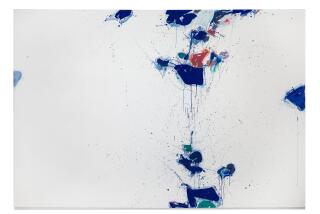Asian Art Museum’s ‘Yoga’ exhibition poses a historical view
- Share via
Yoga has a 2,500-year history that sprung up in India as a series of mental and physical practices to help escape the cycle of suffering that flesh is heir to. “Yoga: The Art of Transformation” at the Asian Art Museum in San Francisco (Feb. 21 to May 25) offers a voyage through some of that history via art, photography and film. With 135 objects borrowed from 25 museums and collections internationally, this is the “first major art exhibition about yoga,” says the museum.
“Yoga is a range of practices that focus on controlling the body and breath as a means of stilling the mind,” says Qamar Adamjee, curator of South Asian art at the museum. “These practices were developed around 500-200 BC by various wandering ascetics.” While the practices were closely connected to Hinduism, there were also Buddhist and Jain adherents.
PHOTOS: Arts and culture in pictures by The Times
The exhibition opens with “Three Aspects of the Absolute,” a 19th century painting by Indian artist Bulaki that “visualizes an abstract concept,” she says. “Out of nothingness, consciousness emerges and evolves.” The first panel shows a sea of gold, the second an enlightened being with an aura, and in the third, that being now seated on land.
However, if you expect all to be peace and light, the exhibition will be surprising for its variety. In the 18th century watercolor “Rama Enters the Forest of Sages,” there are yogis practicing different asanas, or poses, in bucolic settings such as meditating quietly in a seated position or swinging by their ankles from a tree. But then there are armed yogi factions jabbing and slicing one another up in the 16th century watercolor “Battle at Thaneshwar.”
Some factions even claimed supernatural powers, and from the ninth to the 12th century, monarchs built temples dedicated to yoginis, female practitioners of yoga, who were thought to assist in rule and in battle. The exhibition includes a grouping of five yogini sculptures, with perhaps the most spectacular the fierce 11th century yogini from Uttar Pradesh. She sits boldly astride her owl with two fingers in the corners of her mouth — blowing, it seems, a whistle shrill enough to strike fear into the hearts of enemies. “Some yoginis have martial powers, she’s one of those,” says Debra Diamond, curator of South Asian art at the Smithsonian’s Sackler Gallery in Washington, D.C., where the show originated.
PHOTOS: Best art moments of 2013 | Christopher Knight
The title of the show refers to how people might be changed through yoga and also suggests how yoga itself has been changed since its popular introduction to the West. In the 19th century, photographs of Indian men lying on beds of nails and performing other exotic feats were in vogue, but “these photographs are such dubious records,” Diamond says. “In so many ways they’re products of European desire … made for the commercial market.” “Hindoo Fakir,” a short film by Thomas Edison of 1902, conflates magic tricks with ascetic practice — the “fakir” does the old woman-floating-in-midair trick.
Yet others would introduce the serious thinking and practice of yoga to the mainstream. Swami Vivekananda, a Hindu monk, is credited with modern yoga. He toured the U.S. giving lectures and classes in the late 1890s and published the influential “Raja Yoga” in 1896. Pictures in the final gallery show him as a portly, imposing man with a debonair turban and a determined gaze. One wonders if he could have foreseen yoga today, practiced by millions of Americans but often within a secular context.
More to Read
The biggest entertainment stories
Get our big stories about Hollywood, film, television, music, arts, culture and more right in your inbox as soon as they publish.
You may occasionally receive promotional content from the Los Angeles Times.










